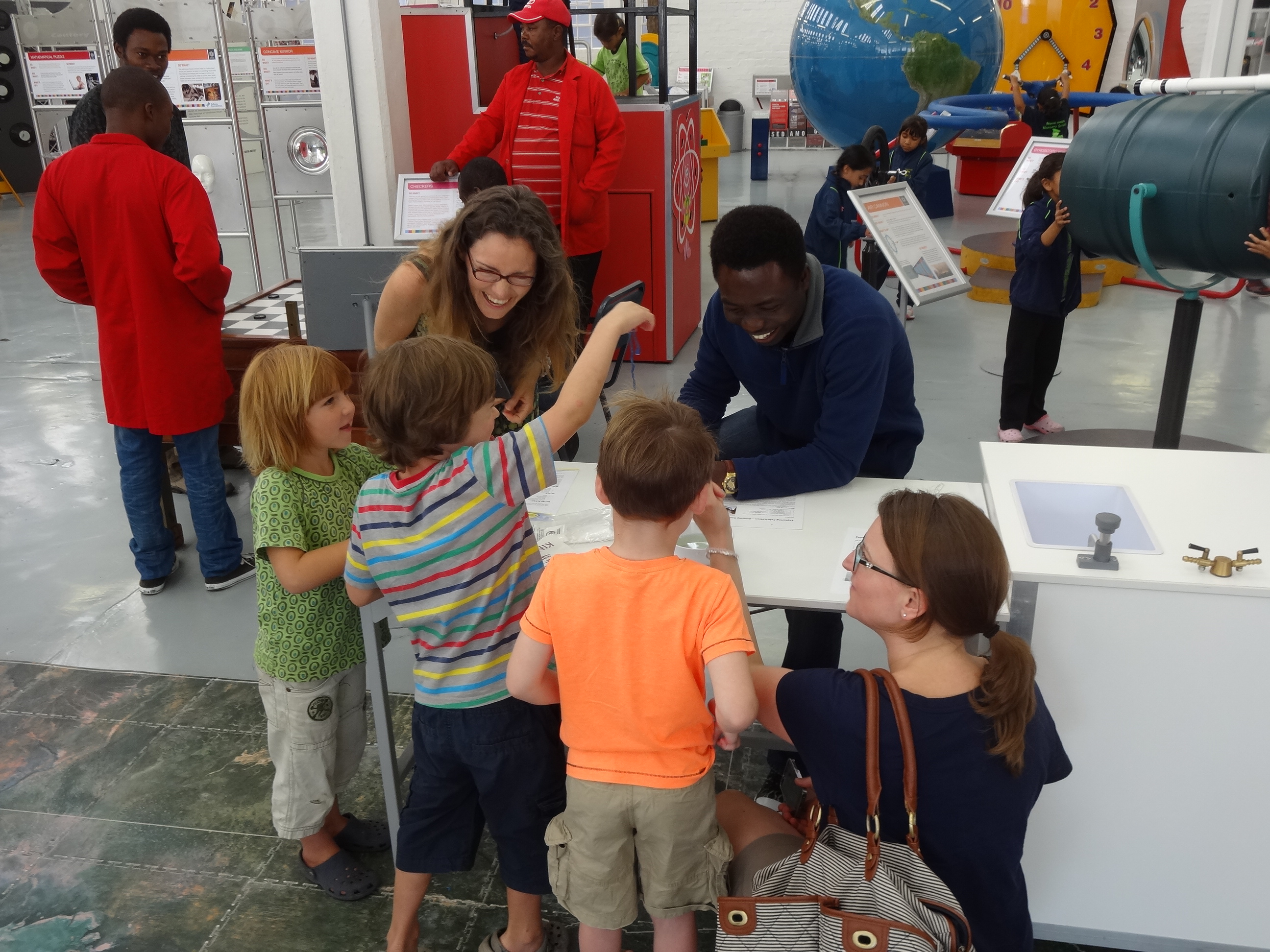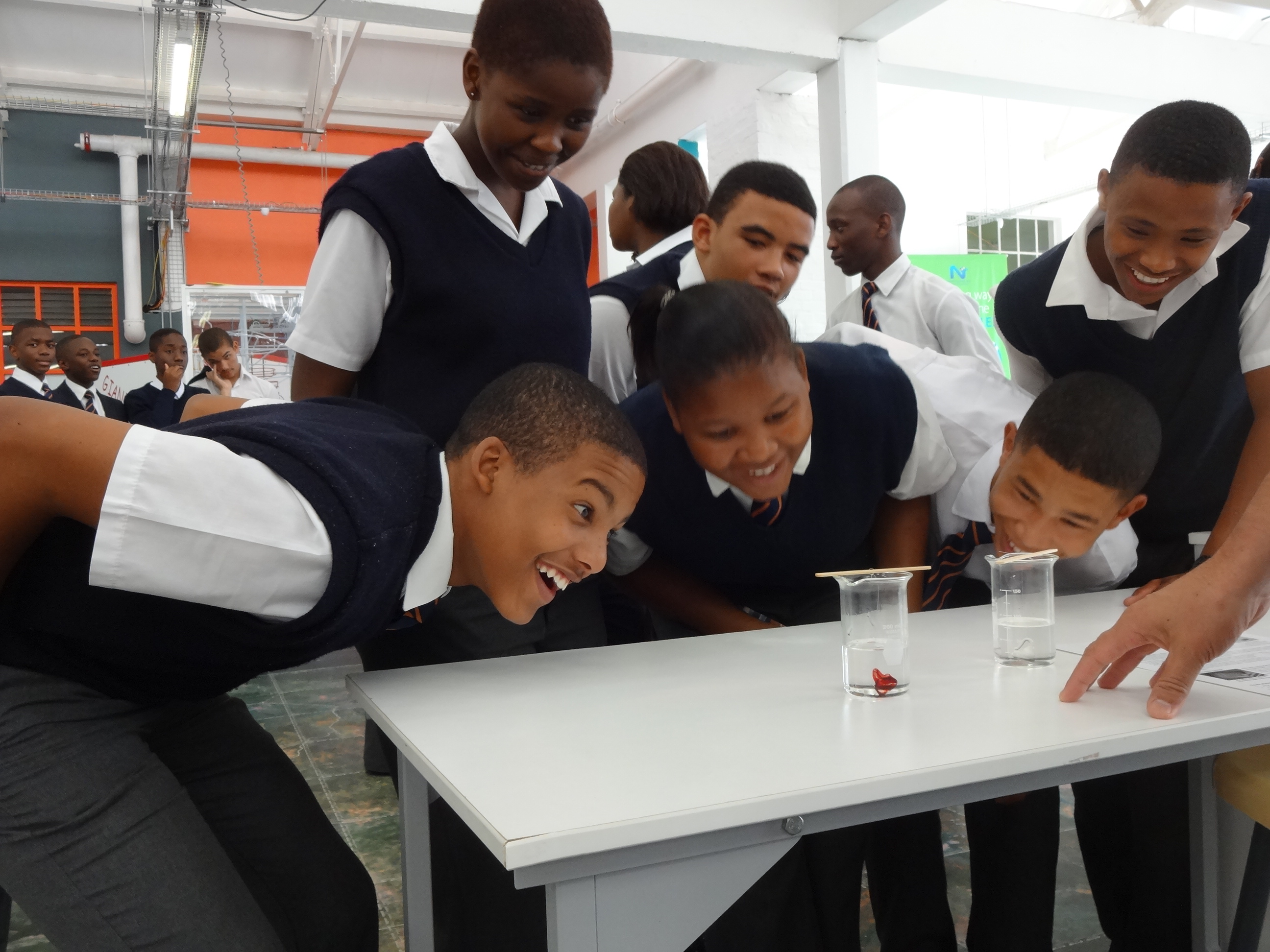In February I got a phone call from Montreal: "OK Jamey I’ve just chatted with our colleagues in South Africa. We’re all set for the workshop on engineering for development. But there’s one more thing…would you mind running NanoDays while you’re there as well?"
The call was from Matt Harsh, a colleague from the Center for Nanotechnology in Society (CNS) who had run NanoDays with me a few times in Arizona. Evidently he had mentioned it to a professor in the Chemistry Department at the University of the Western Cape and she wanted her students to experience it. The workshop we had planned was only going to be held in the afternoons so my mornings were free. "Sure, why not?!" I said. But later as I thought about it I wondered…what the heck do I know about presenting science in Africa?
A few days after I finished NanoDays at the Tempe Arizona Festival for the Arts I packed my bags for South Africa. At CNS we have been getting NanoDays kits for several years now and we had a few extra demos lying around. I gathered up a few of our favorites – Gummy Capsules, Sunblock, Invisibility Cloak, and You Decide! and added them to my luggage. The plans were all set. I was to have a morning to train a half dozen chemistry grad students in how to present nanotechnology and then we’d spend two days on the floor of the Cape Town Science Centre.
A couple days after arriving in Cape Town, Matt and I found the small room at the University of the Western Cape (UWC) that we were to use for the training. As the rooibos tea was passed out I realized that there were a lot more people in the room than I anticipated. "Are you all graduate students?" I asked. "Um no…we’re here from Arcelor-Mittal." "From where?" "The Arcelor-Mittal Science Centre in the Western Cape. We heard about the training and drove a few hours to get here this morning." The Arcelor-Mittal staff eagerly explored the demos and made the training significantly better than it would have been. Matt and I taught the basics about nano and introduced the demos and then the science centre staff offered advice on how to present on the floor.
The Arcelor-Mittal’s staff usually have a very tough job because their science centre is in the middle of an area that is only reluctantly abandoning Apartheid. One of the struggles is that the best schools in their area all teach in Afrikaans. As a result a large number of young people – those who speak English and/or Xhosa – can’t go to a good school. The Arcelor-Mittal staff therefore spend most of their time traveling to small villages to introduce kids to as much science as possible. For some of the schools they visit, the experiments they do with equipment from their van is the only science the kids will get.
Their manager noted that the most difficult thing for her is that the people in the area have no dreams, no vision for how life could possibly be outside of their little area. The science centre staff sees their work as an effort to provide such a vision. I’m hoping we were able to help a little bit with that goal. The Arcelor-Mittal staff really enjoyed the demos we had brought and were quickly doing them better than I could. They were thrilled to get ideas about ways to present nano in their programs.

The next day the eight graduate students made their debut at the Cape Town Science Centre. I was a bit worried that it would be so foreign to me that I wouldn’t know what to do, but the Cape Town Science Centre would be very familiar to most NISENeters. It has whispering dishes, human gyroscopes, and a hundred other hands on activities. The only thing that really stood out as different was a six foot tall rusted fuel tank that had fallen off of a Delta II rocket and crashed into the countryside north of Cape Town. Evidently NASA sent the South African government a letter which basically said: "Whoops! Our bad." It’s now proudly on display in the corner of the centre.
Our first day was pretty slow, but it gave us a chance to get to know the staff at the science centre. Many of their presenters have advanced science degrees and are there as the result of an interesting program. About ten years ago the South African government invested a huge amount of money to help train new Science and Engineering PhDs. The goal was laudable, but did cause a bit of a problem. There are now far more PhD scientists than there are jobs. To its credit, the government didn’t want to lose the momentum of this scientific workforce, so they now pay scientists stipends to spend 6 months to a year working at science centers. The idea is that they can develop some useful communication skills while at the same time staying connected to the scientific endeavor. They also serve as an inspiration to local kids who are amazed to meet scientists that look like them.
Eventually we had a handful of homeschool families stop by. This gave the grad students a chance to practice without too much pressure. And they picked it up quickly. I must say that after learning so much about the lasting damage caused by Apartheid it was particularly satisfying to watch a black African PhD chemistry student from the Congo using our kits to teach white South Africans kids about nanotechnology.
Thankfully we had that practice because on our final day we had our biggest challenge. A local magnet school had planned their day around a visit to the science centre to participate in NanoDays. So out of nowhere we had over 50 students between the ages of 8 and 14 and we were told simply to teach them. Again the students – young and old – loved it.

I think I can safely say that NanoDays was a big hit in South Africa this year. About a hundred students, teachers, and parents gained a basic understanding of nanotechnology and even thought a bit about the possible implications. The graduate students went from having never presented to a young audience to being quite proficient at it. And the staff from two different science centres were quite excited by the NISE Net materials that we donated to them and they looked forward to exploring the online catalog even more fully. My brief experience in Cape Town convinced me that the materials developed by NISE Net not only work in the United States, they can inspire children and their teachers as far away as Africa.
For questions or comments about NanoDays in South Africa, please contact NISE Network partner Jamey Wetmore at [email protected].
